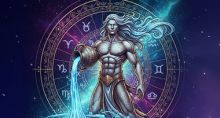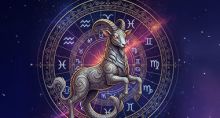Mariamman: The Goddess of Rain and Pestilences
Goddess Mariamman is a deity who is more familiar to people living in rural areas in states like Tamil Nadu, Andhra Pradesh, and Karnataka than urban dwellers. Her worship is an ancient tradition in villages. It is a cult that existed even before the Vedic gods, making it more than 4000 years old. Before the Vedic period, the villagers used to worship local deities. In fact, each village had its own deity who responded to local concerns and provided the relief that was sought. Mariamman worship, too, evolved in this manner.
Who is Goddess Mariamman?
In rural communities, rainfall – too much or too little of it – was a major concern. It meant a ruined harvest, economic loss, and potential starvation. Therefore, villagers needed a deity who could control the rain. Mariamman fulfilled this role. ‘Mari’ is a Tamil word that means ‘rain,’ while ‘Amman’ means ‘mother goddess’. Mariamman was the earliest and most venerated village deity in south India, especially Tamil Nadu. With the passage of time, people’s needs and expectations of her grew. She became the goddess of fertility, both natural and human. Pregnant women began to offer glass bangles to Mariamman, praying for safe childbirth. Another concern was disease. During the rainy period, people were likely to contract highly contagious diseases and often fatal diseases like measles, smallpox, chickenpox, etc. Such diseases were called ‘Ammai’ by the Tamil people. Thus, Mariamman was also worshipped for immunity from these diseases.
Mariamman is an egalitarian deity. Her temples do not require Brahmin priests to perform ceremonies. Sangam literature (6th century BCE - 3rd century CE) even hints that the big Madurai Mariamman temple had a high priestess.
Later, other forms of Mariamman, like Pidari, Katteri Amman, Draupadi Amman, and so on, also came into being. Basically, people worshipped her for protection from diseases, mainly the pox variety. The goddess became established throughout Tamil Nadu as the Gramadevata (village goddess) or Kaaval Deivam (protecting deity).
With the advent of the Vedic age, Mariamman came to be seen as a form of Parvati and Durga. Goddesses of the Vedic Hindu pantheon. Some see her as the sister of Lord Vishnu. An interesting story in the Mahabharata says that Draupadi was a form of Goddess Kali, but she led the life of an ordinary woman as the wife of the Pandava princes. Only Lord Krishna knew this fact. At night, she supposedly traveled to certain villages in Tamil Nadu and protected the villagers.
Mariamman even traveled abroad with the Tamil diaspora. So, there are Mariamman temples in places like Singapore, Fiji, Sri Lanka, Indonesia, Malaysia, South Africa, Mauritius, Vietnam, Thailand, and Myanmar.
Some believe that her origin goes back to Renuka, the mother of Parashurama, an avatar of Vishnu. Her festivals are usually celebrated during the late summer and autumn seasons.
Iconography
Mariamman is typically portrayed as a beautiful woman with a crimson face and wearing red clothes. Sometimes, she has many arms, but mostly she has two or four arms.
She is shown seated or standing, holding a Trishul/trident in one hand and a bowl/kapala in the other. One hand displays the abhaya mudra signifying protection. She has two facets—one amiable, and the other fearsome, with protruding teeth and unruly hair.
Sometimes, she is embodied through a brass vessel or earthen pot containing water and adorned with neem leaves. In many instances, she is not confined within structures. Instead, she can be found in the natural world as a humble stone rooted in the earth. Even the earth can take on the semblance of her face. Her essence pervades the entire village, and her form is an extension of the community.
Legend of Mariamman
Renuka was the wife of Sage Jamadagni and mother of Parashurama. She was known for her chastity and virtue. Due to her virtue, she could even fill water in unbaked vessels. However, once she came upon a king having sex with his wife by a riverbank, which triggered lust within her. She lost her divine powers, and Sage Jamadagni realized it.
The angry sage told his 5 sons to behead Renuka. However, only Parashurama, the 5th son, agreed to do it. When he tried to behead her, Renuka ran away and sought refuge in the home of a humble, low-caste woman. Parashuram followed his mother there, but by mistake, he beheaded the low-caste woman who tried to prevent the matricide.
Impressed by Parashurama’s obedience, Jamadagni granted him a boon. Parashuram requested his mother’s life. Jamadagni gave him a vessel of water, which he had to sprinkle on Renuka’s lifeless form. While trying to revive Renuka, Parashuram mistakenly affixed the low-caste woman’s head to Renuka’s body. Jamadagni accepted his wife's new form, and she came to be called Mariamman.
Benefits of Worshipping Mariamman
Villagers believe Mariamman can heal “heat-based” diseases like pox and rashes. Devotees also worship her for boons like the well-being of the family, fertility, healthy progeny, and good life partners. Her favorite offering is “Pongal,” usually cooked within the temple complex using terracotta pots and firewood. Many festivals dedicated to her feature night processions during which devotees carry oil lamps. Mariamman enjoys the status of a family deity for many people in the Thanjavur district.



















